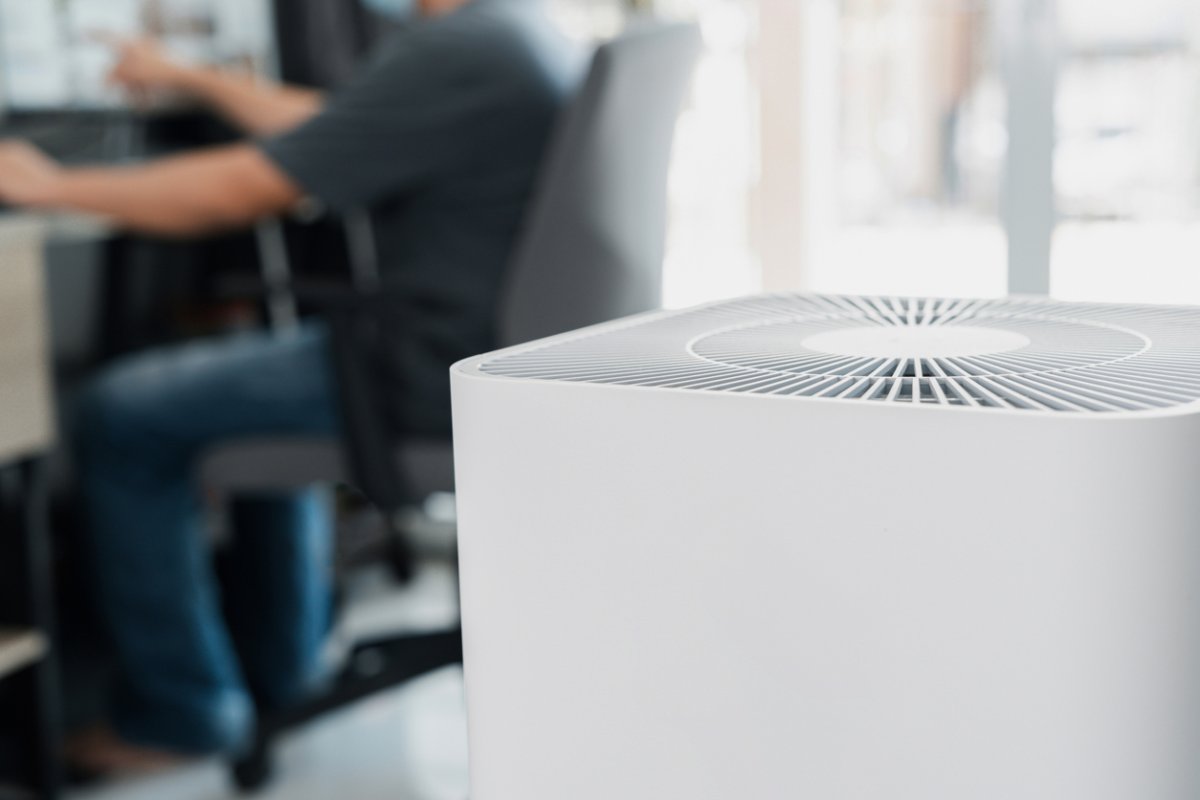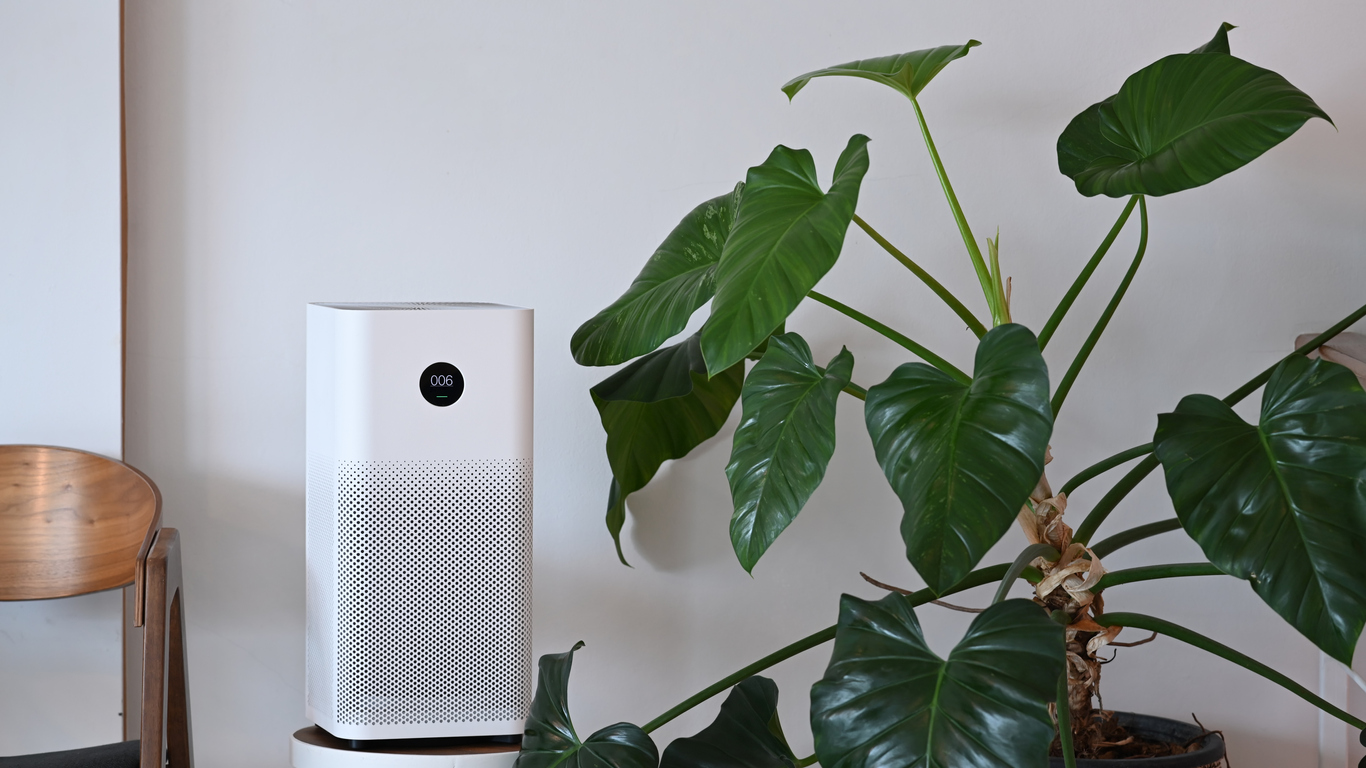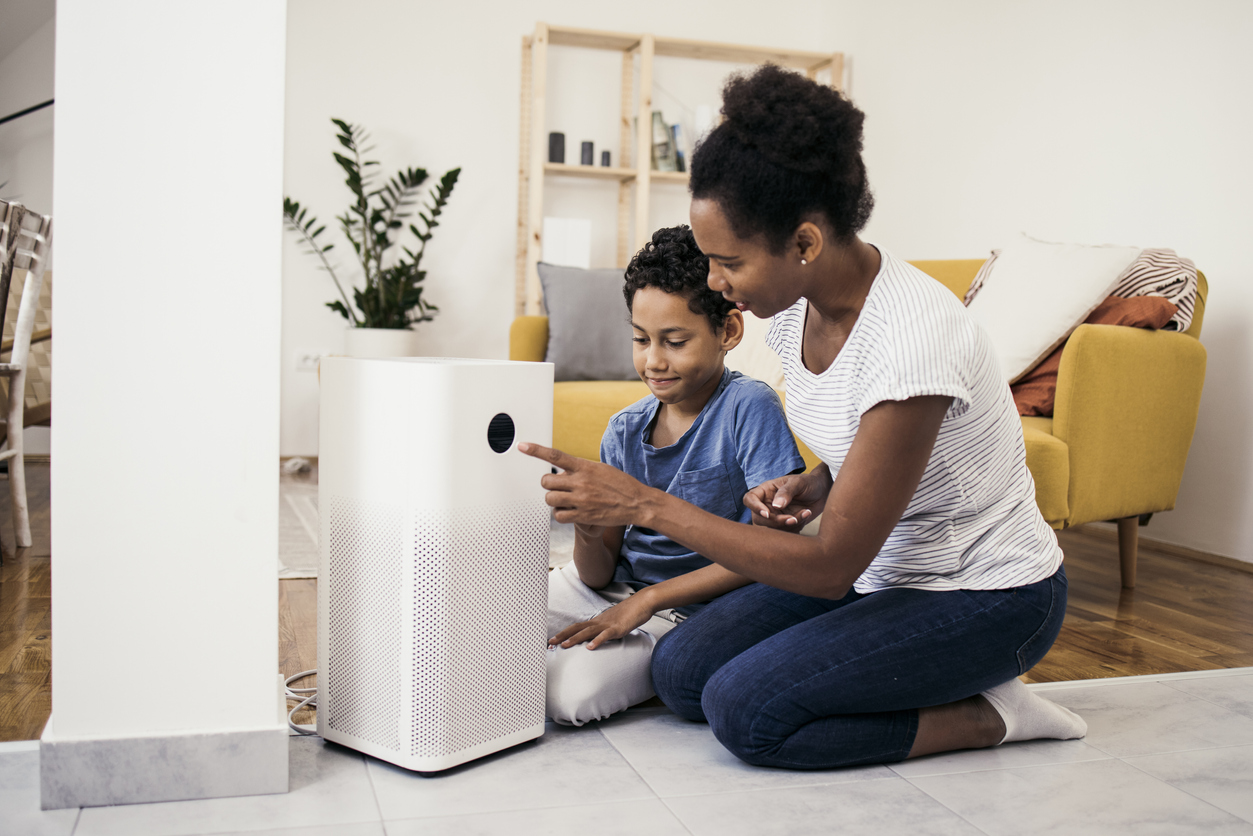

We may earn revenue from the products available on this page and participate in affiliate programs. Learn More ›
Home can be a sanctuary from the hectic world, but if the air indoors triggers allergies and other health problems, it can become an unfortunate situation. Common indoor air pollutants—such as mold, pollen, dust, pet dander, formaldehyde, particulate matter, and volatile organic compounds (VOCs)—result from typical indoor sources and activities like cooking, cleaning, smoking, building materials, consumer products, and home furnishings.
According to the U.S. Environmental Protection Agency, using a portable air purifier is an effective tool for improving indoor air quality. And the best air purifiers for allergies or smoke with HEPA filters can make the needed difference to improve indoor air quality. The trick is to recognize the best place to put an air purifier so that it maximizes filtration and airflow throughout the room to keep everyone as healthy and safe as possible.
The following are a few tips to keep in mind so you know where to place air purifiers in your home to maximize their benefits.
RELATED: Levoit Air Purifier Review: How Does This Budget-Friendly Air Purifier Perform in Tests?
Put an air purifier near the problem.
“If you can, place the purifier close to things that make the air worse,” suggests Josh Mitchell, HVAC technician and owner of Air Conditioner Lab. “This could be near the kitchen to tackle cooking smells or where your pets hang out, since they can bring in a lot of dust and dander.”
The most advantageous part about portable air purifiers is that they can easily be moved and placed near the air quality issue.
Keep it off the ground.
Mitchell also recommends placing a room air purifier at breathing height, at about 3 to 5 feet off the ground. “Placing the purifier at a breathing level, either on a table or a stand, can be more effective. It works well when it’s closer to where we breathe because it can catch more of the dust and particles we might breathe in.”

Give air purifiers clearance.
Air purifiers need plenty of space around them to work at maximum performance. They need to easily take in tainted air and then push filtered air back into the room. It is important to avoid air purifier placement that is in a corner or up against the wall, and keep other objects away from the unit.
“Portable air purifiers should be placed in areas where they can effectively circulate and clean the air,” says Brad Roberson, president of Aire Serv, a Neighborly company. “Ideally, position the air purifier in a central location with good airflow, avoiding obstructions that may hinder its performance.”
HVAC brand Carrier recommends placing an air purifier on a flat surface with at least 12 inches of breathing area around the four sides of the unit.
Avoid placing it near heat or moisture sources.
To ensure that the air purifier works to the best of its ability, do not set it in rooms with high heat or humidity. According to Samsung, the maker of consumer electronics that includes air solutions, an air purifier in a moist area will require more energy to generate airflow. This will ultimately reduce how the air is filtered. Also, moisture can cause the unit to malfunction. Therefore, avoid using air purifiers in bathrooms and other areas that tend to have high humidity levels.
RELATED: Solved! What Is a CADR Rating?
Put air purifiers in rooms you use most.
Be strategic by placing air purifiers in the rooms most frequented. Mitchell suggests, “Focus on high traffic areas. It’s a good idea to put your air purifier in places where you and your family spend the most time. These areas typically have higher air pollutants due to frequent use.” This is often the living room, family room, bedrooms, kitchen, or home office if someone works from home. Having a dedicated kitchen air purifier may be particularly beneficial.

Be mindful of nearby electronics.
The best location for an air purifier is far away from electronic devices. Avoid putting portable air purifiers close to electronics, such as televisions, microwaves, and stereos. Because these devices may run on similar wavelengths as the purifier, they could interfere with how the purifier operates. A good rule of thumb is to keep an air purifier at least 6 feet away from electronic devices in the room.
Place them in the correct sized room.
While whole house air purifiers can help reduce respiratory irritants and minimize allergy symptoms throughout the home, portable units are most effective when the room is the right size for its capability. “Select a purifier that is appropriate for the square footage of the room,” advises Roberson.
Since the size of a room is one of the most important factors in determining an air purifier’s effectiveness, check the label and manufacturer’s instructions for the maximum square footage rating in order to choose the best unit for the space. This will help determine if a small room air purifier, like this highly rated option available at Amazon—the “best bang for the buck” pick in our tested buyer’s guide, or a large room air purifier, like this one, is necessary.
RELATED: How to Test Air Quality in Your Home
Keep doors and windows closed.
Finally, to ensure that an air purifier works effectively to improve indoor air quality, keep doors and windows closed while the air purifier is running. “Do not place [the air purifier] near openings such as doorways or open windows,” recommends Dr. James Langer, air filter expert and president and co-founder of Colorfil.
“While they can still be useful in other contexts, air movement through openings or doorways lessen the impact of an air purifier when used in open living spaces or kitchens,” says Langer. This helps prevent smoke and other air pollutants from entering the home from outdoors.
